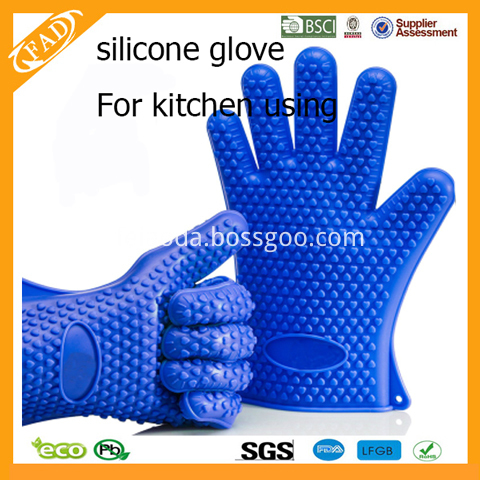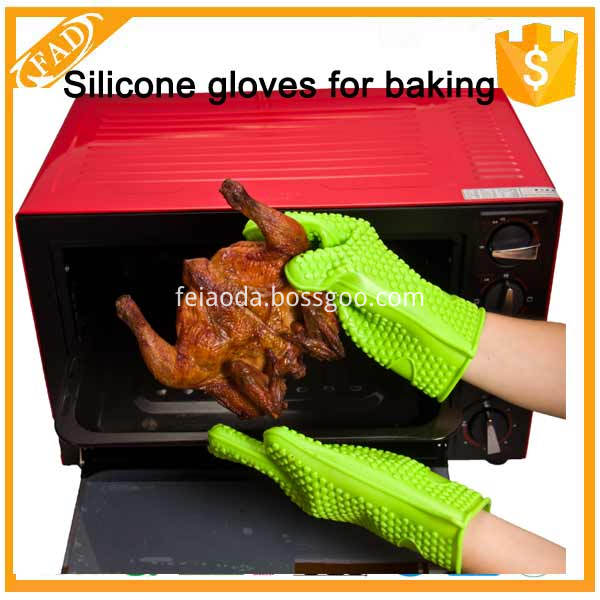Labels can be said to be a bright spot in the printing industry in recent years, especially self-adhesive labels, which have formed a complete industrial chain in China, and the status of label printing in the market has gradually been paid attention to by people.
For now, the biggest problems with label printing are the small batch demand for label printing, multi-variety trends, and environmental issues. In fact, these problems not only occur in the label printing industry, but also a common issue facing the printing industry. However, the label industry must respond accordingly. With regard to the requirements of small batches and many varieties, some printing companies have proposed the following schemes: the introduction of printing machines with easy plate changes; and the establishment of an in-plant management system from order receipt, printing to delivery ; The introduction of computer-controlled equipment in the pre-press and post-press processes is a proper way to adapt to the time.
1. The current status of the label printing market
Based on the views of many printing professionals, the current domestic label market has the following characteristics: paper labels are still the mainstream of labels, but the growth of film labels is very rapid. For example, film labels are mostly used in high-end daily chemical products. The reason is that Film labels have excellent water and moisture resistance, high temperature resistance, abrasion resistance, and tear resistance.
Relatively speaking, among various types of labels, shrinking labels have the fastest growth rate. The materials and forms used for labels are also becoming more and more diverse, and more and more label products are printed on rolls. The application of flexographic printing technology is gradually increasing, and many flexographic printing machines adopt a combination printing method, and install a rotary screen printing unit, hot stamping or cold stamping unit, etc. Small batch orders, quick job replacement and fast delivery have become the main requirements of end users. As a new product with high-tech content, RFID tags have functions such as product tracking and control, which also indicates that label printing has entered the field of digital printing.
We can refer to the following table for the main label types and application scope. A brief overview of the mainstream labels currently on the market will be provided later.
1. Stickers.
Self-adhesive labels are also called self-adhesive labels, timely stickers, instant stickers, etc. It is a composite material that uses paper, film or special materials as the fabric, the back side is coated with an adhesive, and the silicon coated protective paper is the bottom paper, and After printing and die-cutting, it becomes a finished label. In application, just peel off from the base paper and gently press it to stick to the surface of various substrates, or use the labeling machine to automatically label on the production line.
In China's label market, self-adhesive labels dominate, with an annual growth rate of about 20%, but compared with developed countries, there is still much room for growth and development potential. Our self-adhesive label industry has its own characteristics, that is, there are many small and medium-sized factories, and there are few professional large-scale printing plants; there are many primary equipment and few high-end equipment in printing plants; Regions are developing, and remote areas are relatively backward.
2. Shrink the label.
The shrinking label market is undergoing rapid growth, and its market share is constantly expanding, far exceeding the annual growth rate of the ordinary label market. The main application area of ​​shrink labels is the beverage industry. In addition, the growth momentum in the food, health products and personal care industries is also very strong. Shrinkable labels are highly adaptable and can be used on plastic, wood, paper, metal, glass, ceramic and other packaging containers.
The commonly used film materials for shrink labels are mainly PVC, PE, PET, OPP, etc. They have their own characteristics in terms of shrinkage characteristics and environmental protection. When selecting, they must be comprehensively considered for the specific application of the product. For example, PET material has good environmental protection and plays an important role in the European market that attaches great importance to recycling. From the point of view of printing process, the current shrink label is still dominated by gravure printing, and the market share of flexographic printing is relatively small. In addition, offset printing and digital printing also have a certain range of applications to meet the specific needs of customers.
3. In-mold label.
The structure of the in-mold label is different from the commonly used self-adhesive label. It has a layer of solid adhesive on the back. This adhesive will melt at a certain temperature and stick to the surface of the container being stuck. In-mold labels were first used in injection-molded containers, and later developed into blow-molded containers, and were widely used in containers and packaging of various plastic materials, such as HDPE, PP, PET, etc.
In North America, in-mold labels are mainly used for blow-molded containers, while in Europe, they are mostly used for injection-molded containers. The proportion of in-mold labels used in container labels is 12% to 15%, which is mainly used in nursing supplies, daily chemical, Food, beverage, lubricants, medicine and other industries. In China, in-mold labeling has begun to enter large-scale development in recent years, but the development rate is quite alarming. At present, it is mainly concentrated in the lubricants and daily chemical industries.
4. RFID tags.
RFID tags are developed on the basis of electronic technology. It stores huge amounts of information, non-contact reading and writing is flexible and fast, and has strong environmental adaptability. According to professional analysis and prediction of the global RFID tag application market: By 2009, the global RFID market will soar from US $ 2 billion in 2003 to US $ 10 billion.
At the same time, the application fields of RFID tags are continuously expanding and quickly infiltrating into various fields. The test and practical application of RFID tags in the fields of logistics and storage, manufacturing, commercial retail, commodity anti-counterfeiting, transportation, defense and military are gradually being carried out. If RFID technology can be closely connected with the electronic supply chain, it is likely to replace barcode scanning technology. In the long run, outside the logistics field, for example, product-level RFID tags can be used in the anti-counterfeiting of medical supplies, aviation luggage, and library management. There is a lot of room for development.
China's RFID tag market started late, and there is a considerable gap in application from foreign countries. The most direct RFID tag frequency problem has been basically determined in many foreign regions, but China has not yet approved it. Moreover, there are many problems in the domestic market, such as weak basic R & D strength, inadequate participation of enterprises in standardization, and most domestic enterprises holding a wait-and-see attitude.
At present, as far as the entire RFID technology is concerned, there are three major obstacles: standard obstacles, cost obstacles and technical obstacles. Standard barrier refers to the application of RFID, it is necessary to formulate a unified and open technical standard, but currently there are multiple standards on the market at the same time, in addition, many countries and regions are developing corresponding standards suitable for themselves; cost barrier refers to The application field has always been very sensitive to the increase in cost. How to promote the application, the cost can also be said to be the leading factor; technical obstacles, such as the readability of RFID tags, model matching, and data processing, are all difficult problems to be solved.
5. Digital label.
In the past few years, the label market has undergone significant changes. The market and consumers need smaller batches of products, shorter delivery times, and stronger personalization. Traditional printing is difficult to meet this demand in terms of time and cost. As a supplement to traditional printing methods, digital printing has higher flexibility and better cost efficiency. It can also realize variable data printing and printed labels. No more backlogs in the warehouse. Moreover, with the gradual improvement of the performance of digital printing presses, the range of printing materials used is becoming wider and wider, and digital printing is also getting more and more applications in the field of packaging printing. Digital printing technology first entered the field of packaging printing is used for variable data printing and short version label printing.
The digital label solution with variable data printing function enables label printing companies to quickly provide short-term labels at low cost, realize both long and short versions, and provide printing customers with a low-cost solution for printing. To meet the multi-faceted needs of customers, personalized printing meets the user's needs for product segmentation in the market, the anti-counterfeiting printing function provides customers with a safer full-course service, and further enhances the market competitiveness of enterprises.
Silicone Gloves Feature:
PURE, FOOD GRADE: FDA APPROVED & BPA-FREE. Premium 100% Food Grade Silicone. This Silicone Gloves Are Waterproof And Dishwasher Safe Design Effortlessly Washes Grime, Grease And Oil Off.
SAFETY, MAXIMUM PROTECTION: Heat Resistant Silicone Gloves Durability At Temperatures Up To 425 Degrees Fahrenheit.Such as silicone oven gloves.
Silicone Gloves EASY TO USE: The Silicone Gloves Proprietary 10-Fingers Non-Slip Grip. Slip These Silicone Gloves On And Off Without A Problem,
Even When Your Hands Are Wet. Handle Scrumptious Meats Like Chicken And Pulled Pork With Ease.
Easily Grabs Hot Food With A Strong Grip, Even Grab Eggs Right Out Of Boiling Water.
Protect Your Hands. Use In Barbecue, Grilling, Oven, Baking, Camping, Boiling And Open Cans/Jars.
Perfect Kitchen Silicone Gloves For You.
- HIGH QUALITY PULLED PORK SHREDDER CLAWS dominate chicken, beef, brisket, turkey, poultry, hams, roasts and anything from your slow cooker, grill or smoker in record time
- MEAT HANDLER FORKS NEVER LOSE GRIP - bear paw shaped so you can pick up and carry hot foods in the kitchen without dropping them or burning your hands
Silicone Gloves Details
| Name | Silicone Glove |
| Material | 100% food grade silicone, FDA or LFGB Standard |
| Colour | Any pantone color is available |
| Size |
Small: 27*17cm Middle: 34.8*19.5cm Large: 37.8*23cm |
| MOQ | 1000pcs |
| Using Tempreture | Up To 425 Degrees Fahrenheit |
| BPA free | Yes |
| Hardness | Adjustable |
| Usange | Use In Barbecue, Grilling, Oven, Baking, Camping, Boiling And Open Cans/Jars |
| Logo | Embossed, debossed or silk screen print |
| Packing |
Simple polybag, polybag with UPC/barcode sticker. Polybag with instructions, polybag with cardheader, gift box and so on |
| Payment |
Bank Transfer, Paypal, Western Union, Secure Payment, Trade Assurance |
Silicone Gloves Pictures:


Silicone Gloves
Silicone Gloves,Silicone BBQ Gloves,Silicone Gloves for Cooking,Heat Proof Gloves
Shenzhen Feiaoda Technology Co.,Ltd , https://www.flysilicone.com